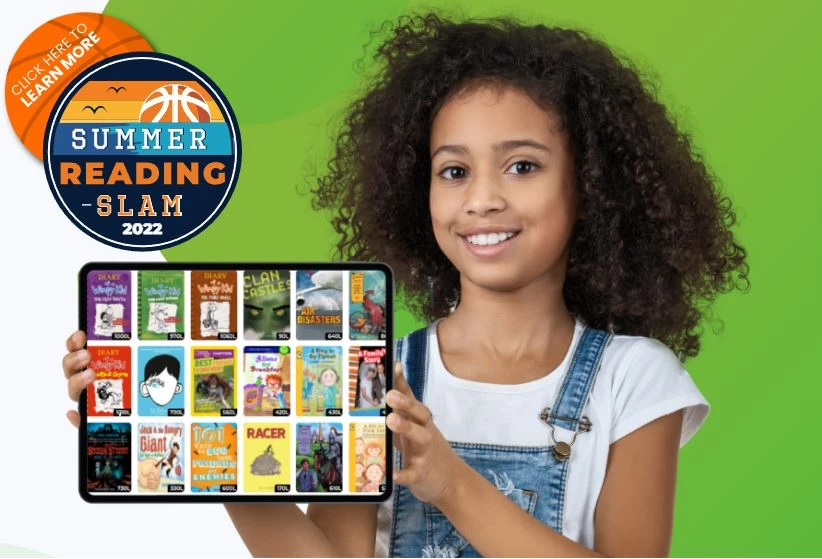
Since the time of one-room schoolhouses, and likely before that, educators at all levels have been hard pressed to know if – and how much – any given student has actually read at any given time. Because of its very nature reading can be hard to see. When a child sits for twenty minutes working on math problems, the results are visibly seen and leave the teacher with a product that requires review and correction. Writing assignments also have tangible results – no matter the age of the student, you could see the quality and quantity of the work produced when it is completed. But for reading? It’s harder to know.
How We Currently Understand Kids’ Reading Lives
Typically, books are assigned to a whole class or to small groups of students, and quizzes and tests are administered to determine the degree to which a student comprehends what has been read. Discrete skills (i.e. vocabulary) are measured, usually after a passage was read. Independent reading is also tracked in schools. Reading logs are disseminated and collected – students report out on minutes and pages read. Sometimes, but not always, kids are asked to summarize what was read with a sentence or two. Teachers also try to check on readers by periodically asking a student to read outloud while the teacher conducts a running record. This common technique in the lower grades allows a teacher to check on a child’s accuracy, speed and understanding. When done well, an educator can see the specific strengths and needs of individual readers, and an approximate reading level can be gleaned.
Many of us learned to read in classrooms that used the above mentioned methods – in fact, many of us have taught and continue to teach using them. Nothing is wrong with that, but each method described has its challenges: Unit tests given at the end of a chapter or book often come too late for the child to be supported with the book. Reading logs used for independent reading are oftentimes unreliably kept, or unreliably checked. And too much time usually passes between running records for teachers to make timely adjustments, not to mention that after middle elementary school this practice nearly fades away altogether. We can probably all agree that we have a long way to go to ensure that all kids can read. Despite the popularity and widespread use of the pedagogical methods described above, the U.S. DOE estimates that 21% of adults read below a 5th grade level, and 19% of high school graduates can’t read. We have to keep clawing towards better solutions.
Periscope out to school and district leaders, and the reading data they see is even less useful and more untimely than what teachers themselves experience. Principals and district leaders see state test results months after they are taken, preventing instructional shifts from happening in real time. In some schools and districts, leaders see data a few times a year after formative assessments are conducted – a typical report would share Lexile levels for kids, growth scores and averages for schools and classrooms. However, leaders still see very little of the actual reading lives of kids – how much they read, how fast, how sustainably, etc. – mostly because until recently it has been nearly impossible to do so.
New Technology Transforms What We Know About Readers
For the past four years I worked as an Assistant Superintendent in Newark, NJ supervising a network of 14 schools and supporting the principals who lead them. One of the universal themes and on-going priorities of our network of schools was our targeted effort to ensure that every child was reading a just-right book for at least 20-30 minutes every single day. For that reason, I was all ears when a principal approached me in the Winter of 2014 to propose piloting LightSail, whose stated mission, “We turn students into readers,” perfectly describes what we had spent the previous three years collectively working towards.
While kids read and interact with questions on LightSail’s platform, a myriad of insights are being collected in the background that – if used well – can transform what we know about our readers, and how we teach them. Reports are produced at the school, class, and student level, providing real-time information about the quality and quantity of students’ reading experiences. Following are at least three ways that teachers and school leaders could leverage the power of these reports.
Just-Right, Right Away
When a student gets started on LightSail, it’s not long before they are matched with a wide range of just-right reading selections. The Power Challenge instantly identifies a student’s Lexile range and immediately provides students with access to several titles across a number of genres that are suitably matched to reading level. A principal could set an attainable goal that could get all kids delving into well-matched books soon after the school year starts. For example, “By September 20th, all students will be reading a just-right book for at least 20 minutes.” In the old days (i.e. yesterday), a leader would have to rely on classroom visits and anecdotals from teachers and students to ensure reading was happening, and primary teachers would have to spend weeks assessing and checking in with individual students to confirm the appropriateness of book matches. Because the initial Power Challenge provides both a Lexile score and an array of offerings at the student’s fingertips, the student could get into a just-right book, right away.
Developing a Culture of Readers
You know how schools often have fundraising goals monitored with thermometer displays showing increases in donations? These thermometers are often accompanied with announcements, flyers for families and on-going messages about the fundraiser at hand. Money matters, of course, but imagine if schools just as easily made public the goals and successes of the school as a culture of readers?
Data reports at the school level can be used to motivate, inspire and celebrate. Using LightSail reports, a school could easily and effectively make public the total number of books read and the total number of minutes completed. These can be displayed as totals for the school, and/or by class as a friendly way to inspire competition and excellence. Real time data makes weekly updates easy to do, and communication to students and families about the importance of reading could be put front and center.
Eye on the Prize
When I was a principal I would carry around a data binder with a big illustrated eyeball on the cover, a visual reminder that I needed to keep my eyes on the thing that matters the most – student learning. In addition to tracking all the input data described above, LightSail reports also let users know how well students are comprehending and growing. Reports not only show Lexile baselines and growth averaged by class (on class reports) or for individual students (on student reports), but they also show the percent of questions answered correctly by students. What this means is that from a leader’s perspective, one glance can help to identify places in the building where students are growing the fastest or lagging behind the most. From a teacher’s perspective, one can easily see – in real time – how much students are or are not understanding what they are reading. No more waiting every few months for data reports, or until the end of a novel when a unit test is given. Real-time, accurate data can provide adults with valuable information that will allow them to support kids faster and with greater efficiency.
In the school that implemented LightSail in Newark, we learned that nothing takes the place of a great teacher and great school leadership, but that with the right tools teachers could do more for kids than previously imagined.Their experience with LightSail was successful because the platform helped them enhance work they have been doing for several years. Having spent many years studying literacy and how kids learn to read, the school staff was able to blend this approach with the other instructional strategies and reading programs. Early results from the school are bright. At the beginning of the school year less than a third of students were at or above proficiency, as determined by the Scholastic Reading Inventory (SRI) – that number jumped to just over half when kids were re-assessed in June. Ultimately, they found that the tools and data generated by LightSail did indeed help them turn students into readers, and that they were able to continue teaching as they always had, only better.
Mitch Center has spent the past 20 years working in a variety of roles and capacities in the field of education, in both district and charter schools. He began his career in the field as an AmeriCorps Volunteer in 1996, and worked as a teacher, camp director, VP, principal and coach before joining Newark Public Schools as Assistant Superintendent in 2012. In this role, he coached and supported 14 school leaders who lead K-8 schools across the city of Newark, New Jersey. As a father of school age kids, and as someone who has visited hundreds of classrooms and schools, he believes deeply that all great schools have one thing in common: outstanding adults who make magic for the kids they serve.
Posted on 8.Aug.16 in Partner Success




